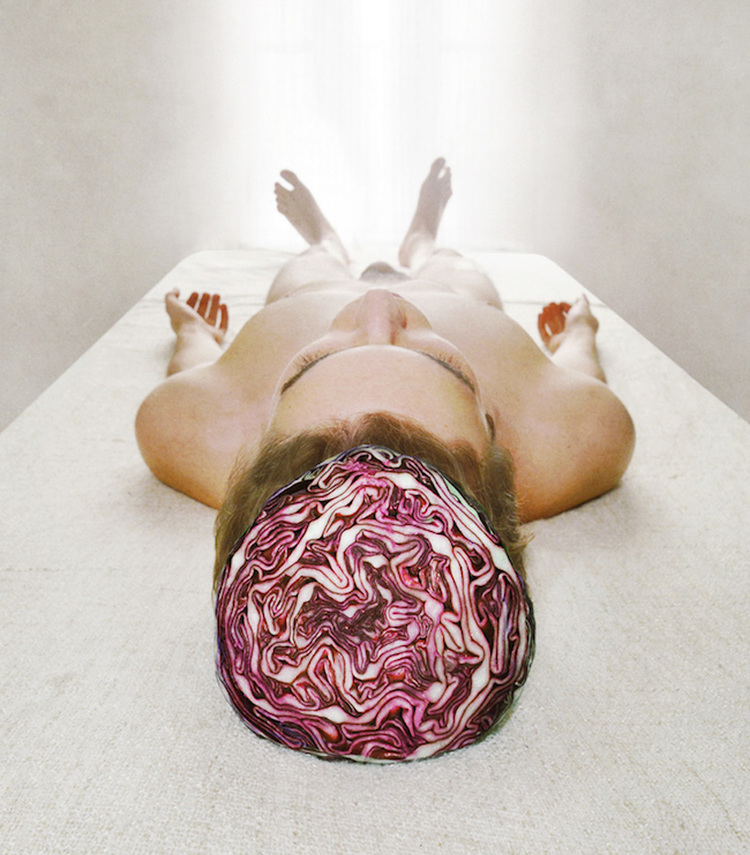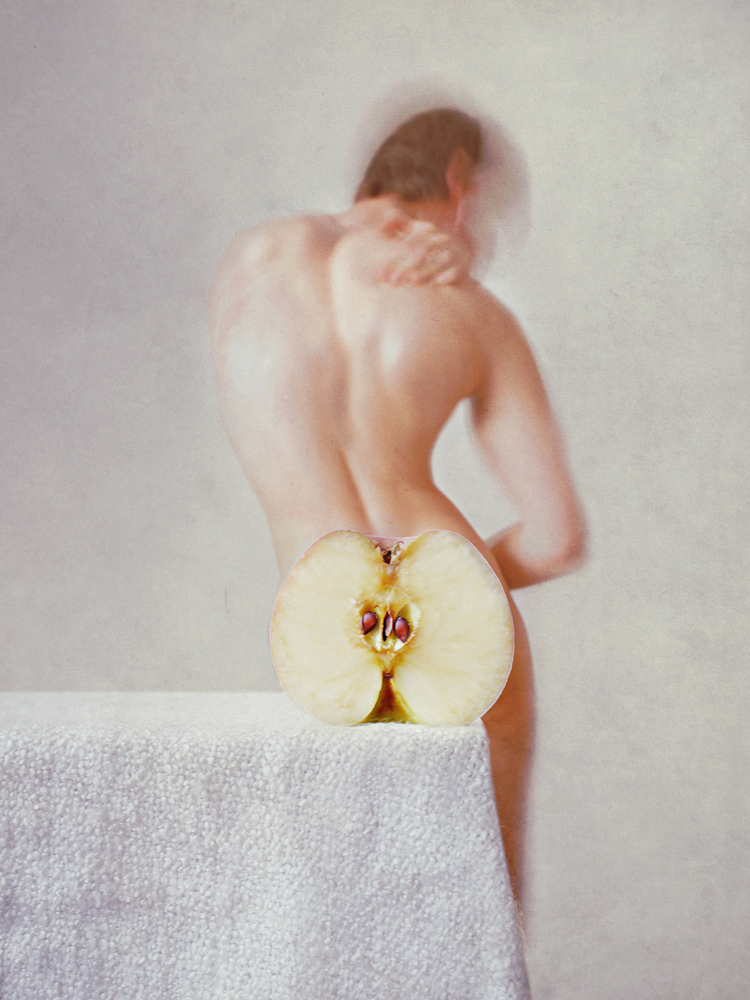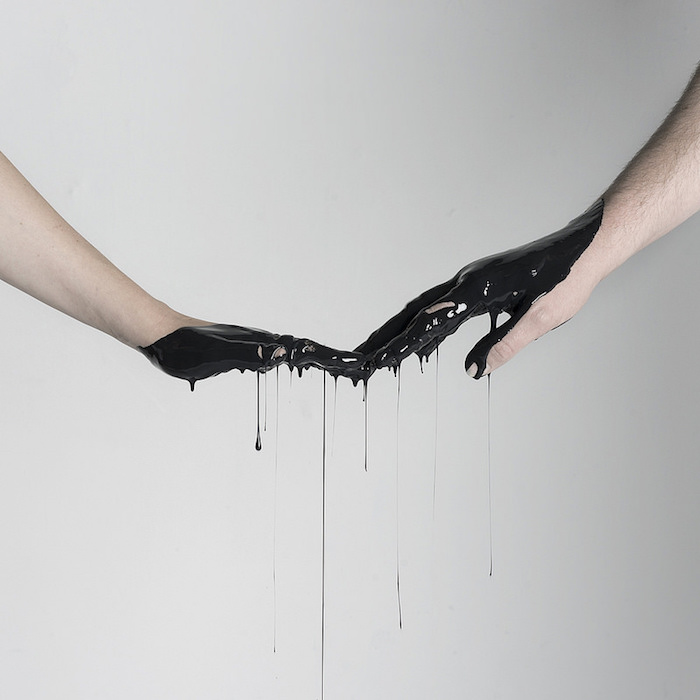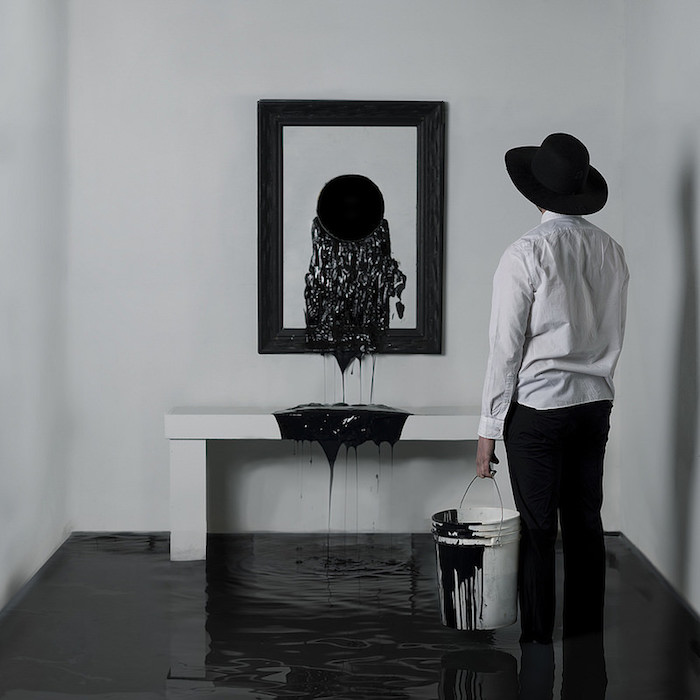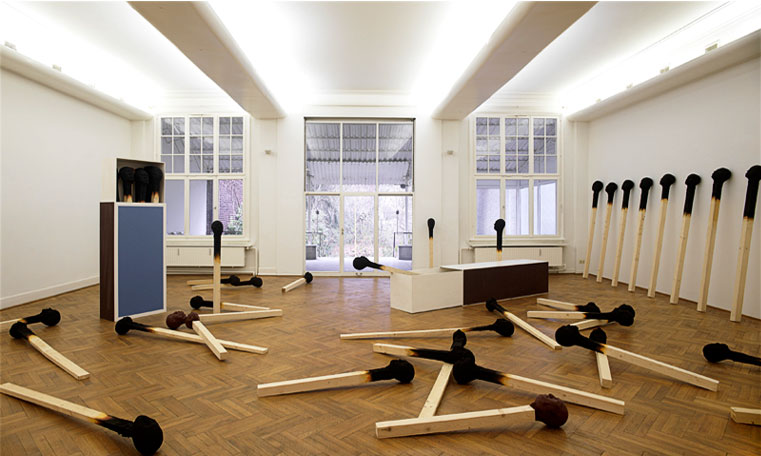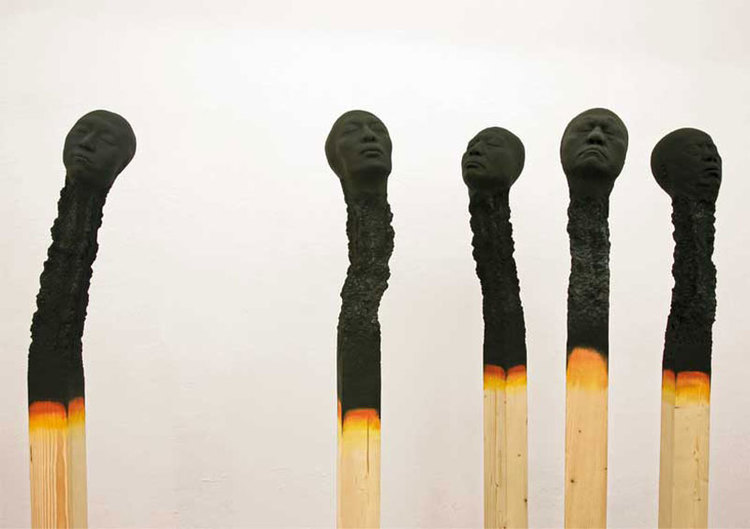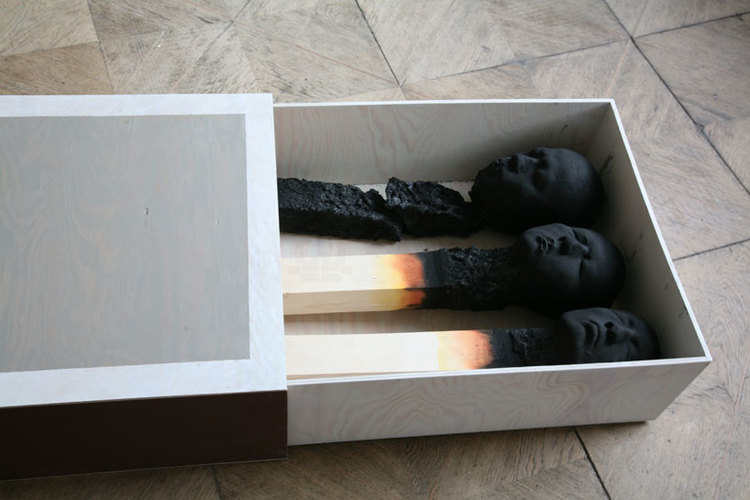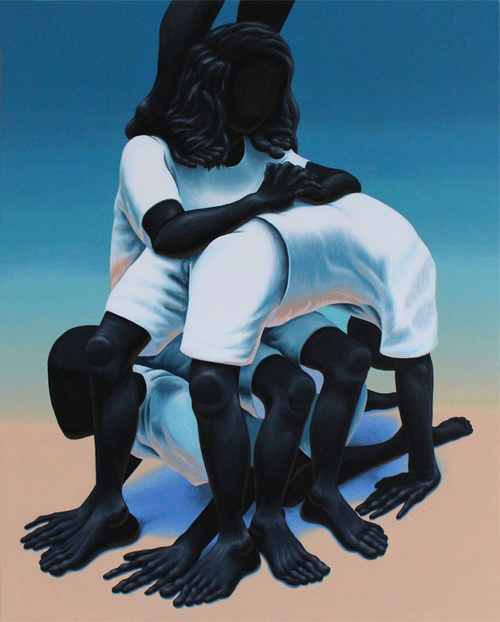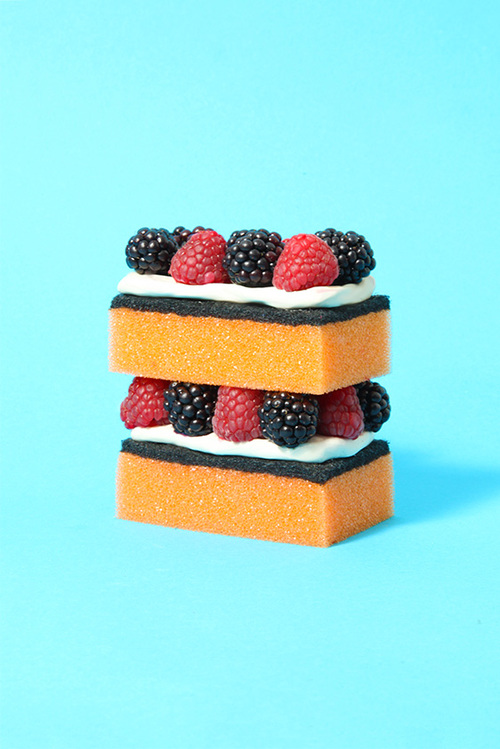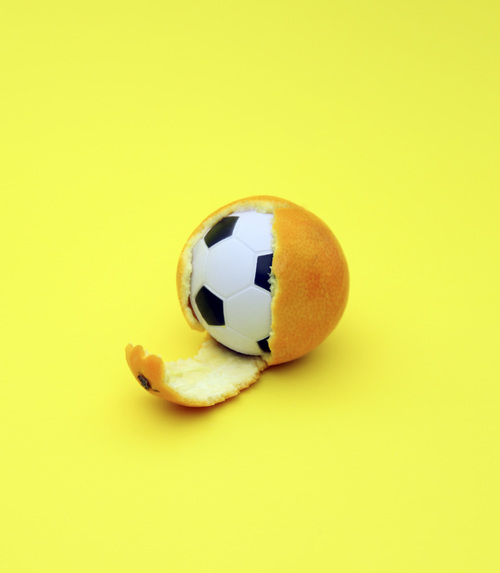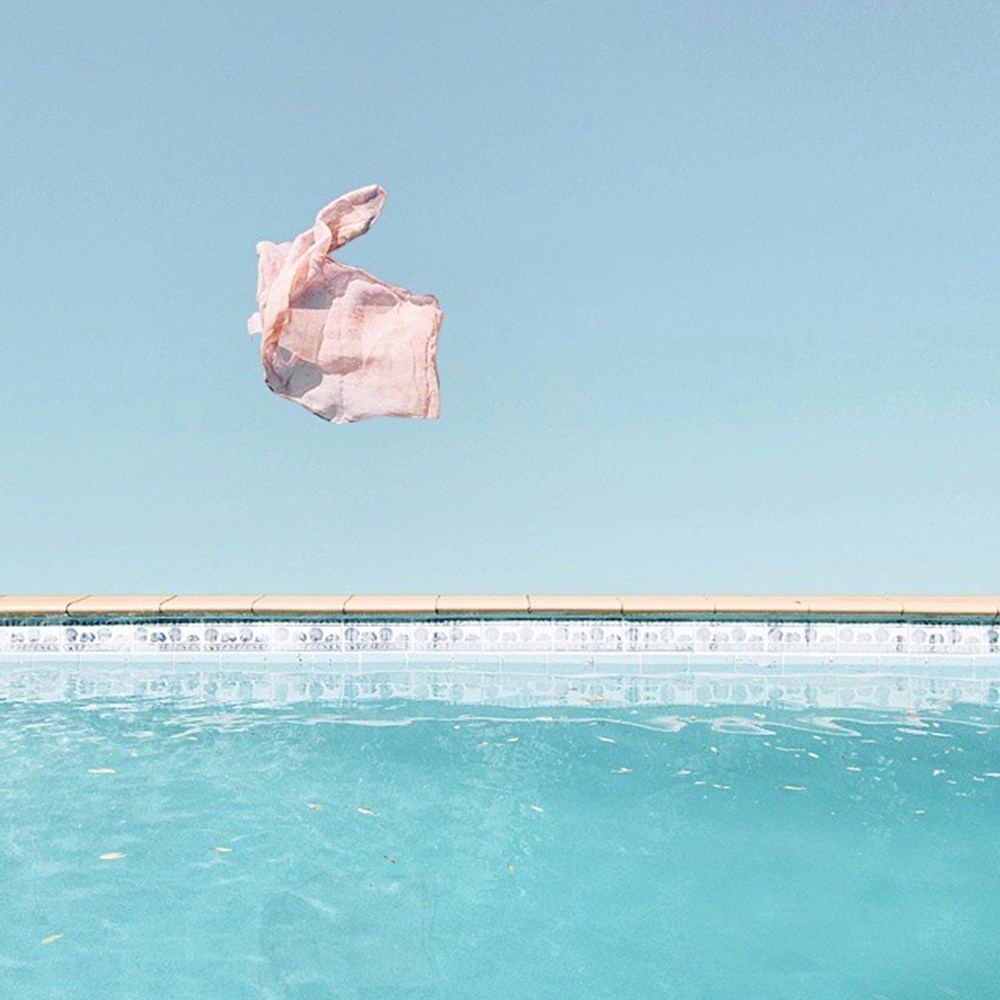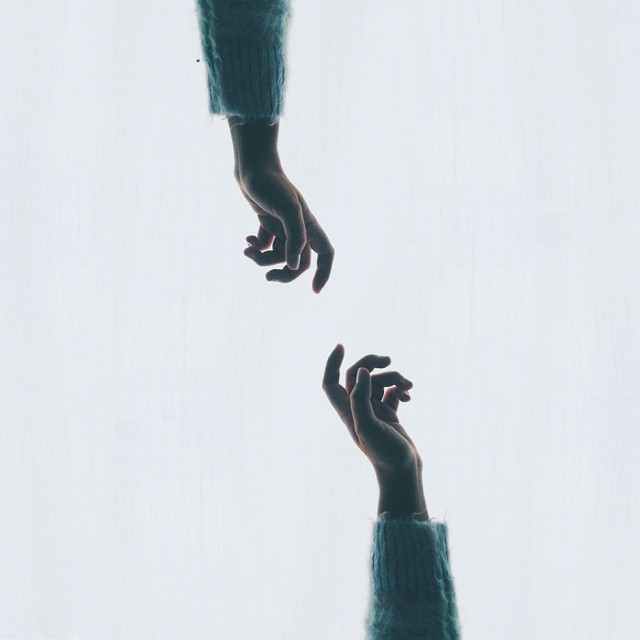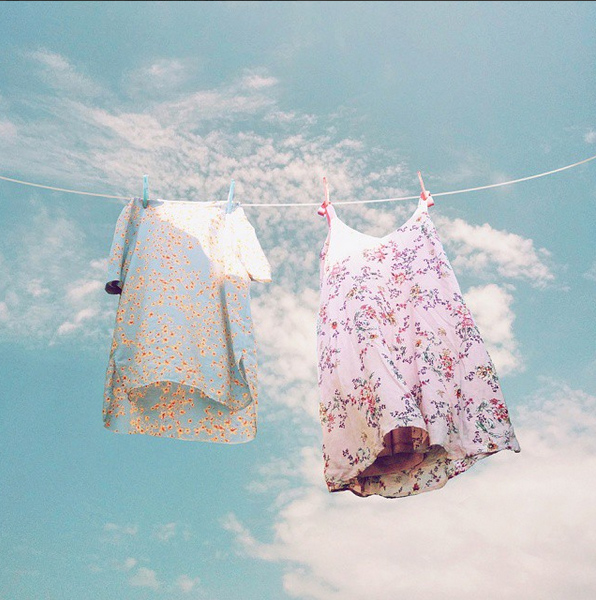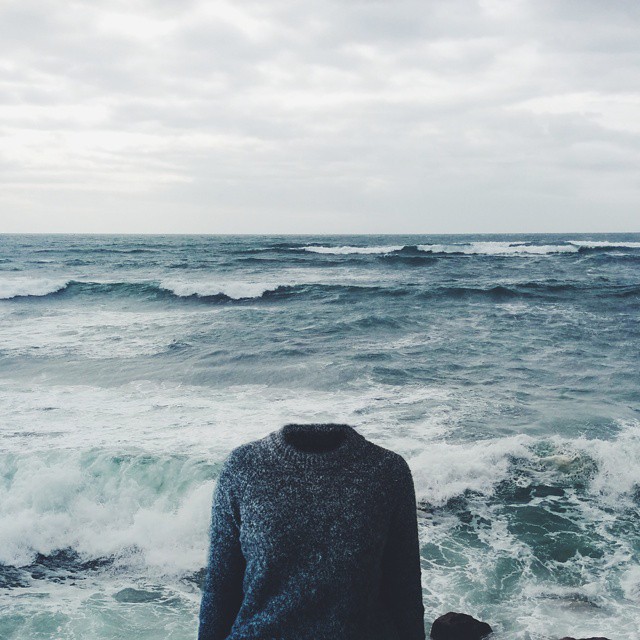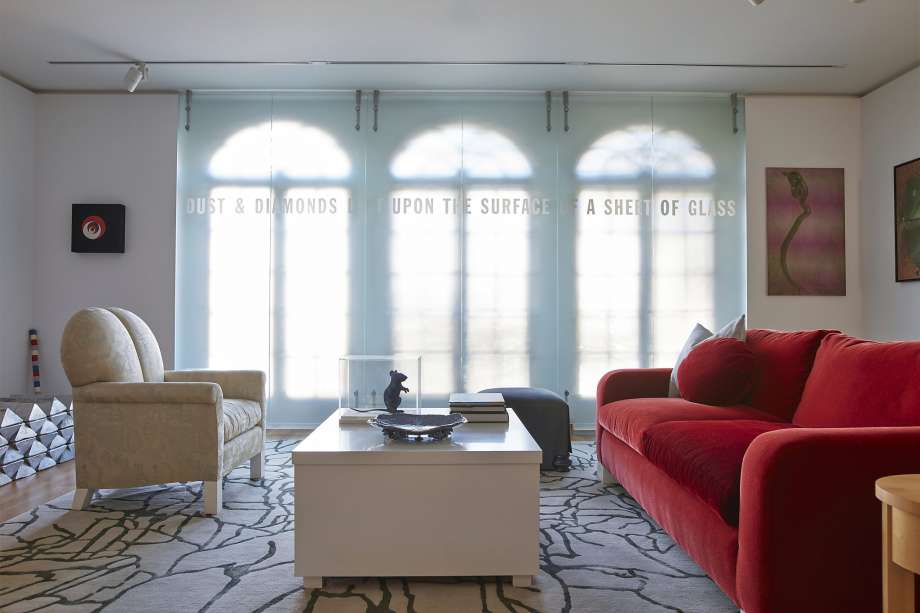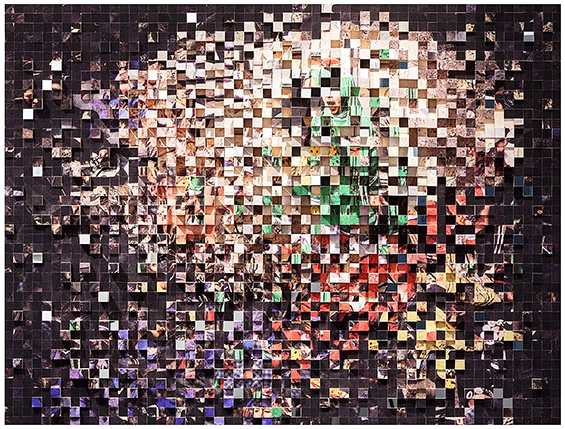 We are definitely looking awry at Looking Awry by artist Shanti Grumbine, in the vain hope of unravelling the wizardry behind her images. The acclaimed newspaper, the New York Times, is her material of choice; manipulating and mutilating the pages, she creates intricate collages that turn your daily (dull) read into dizzying scenes.
We are definitely looking awry at Looking Awry by artist Shanti Grumbine, in the vain hope of unravelling the wizardry behind her images. The acclaimed newspaper, the New York Times, is her material of choice; manipulating and mutilating the pages, she creates intricate collages that turn your daily (dull) read into dizzying scenes.
Grumbine must have the patience of a saint. Scalpel in-hand and an exact eye, her process is extremely laborious and repetitious, but generates such a visually complex effect. For the series Looking Awry, she divides up enlarged prints of front-page covers, mounts these sections onto wood and reassembles the original image into wall reliefs of undulating depths.

The result is an assortment of colours and shapes that look like pixels on-screen, or fragments of a windowpane or waves rising and falling out at sea. Through squinted eyes, you can almost tell the initial image – remnants of a woman’s face or a human body. However, step back, and the picture is lost again to the distortion.
Grumbine is master of carving new meanings into a material with a pre-existing meaning. What we find particularly exciting about her work is that lost in translation idea – she is championing vagueness, evoking emotion rather than the communication of information. She is like an alchemist, transforming everyday media into transcendental portals. So despite, the ghost of former purpose, you can literally see anything you desire inside her creations.
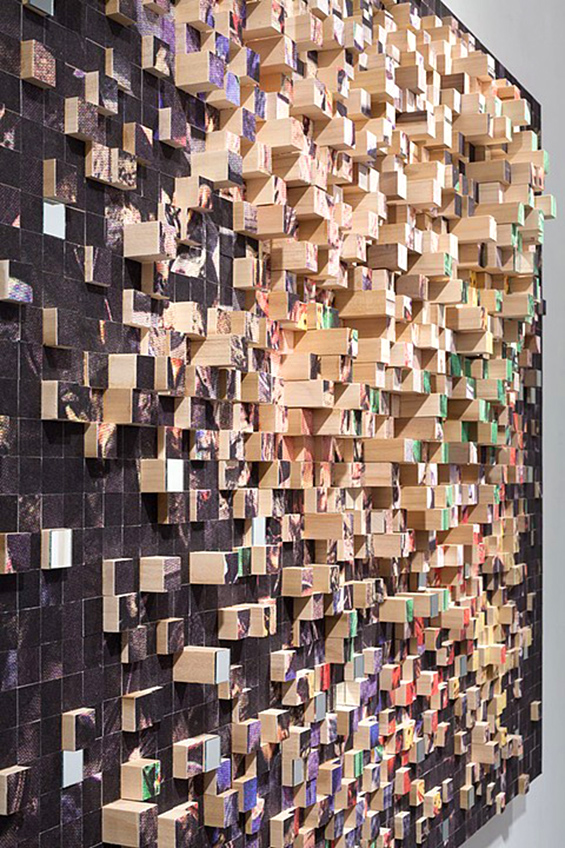
www.shantigrumbine.com



